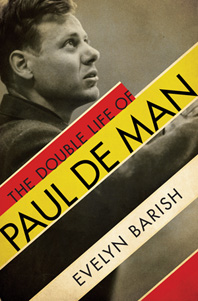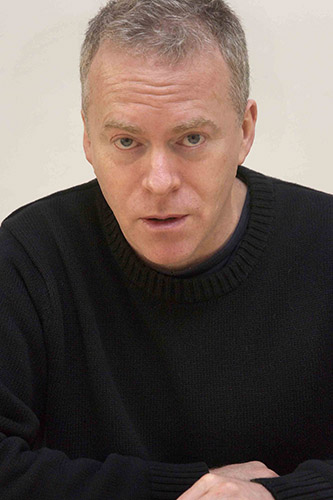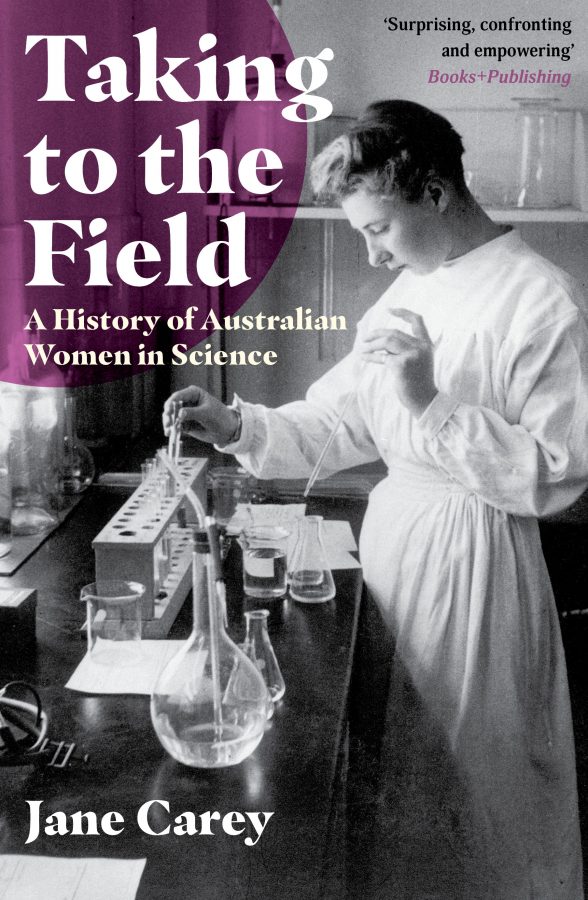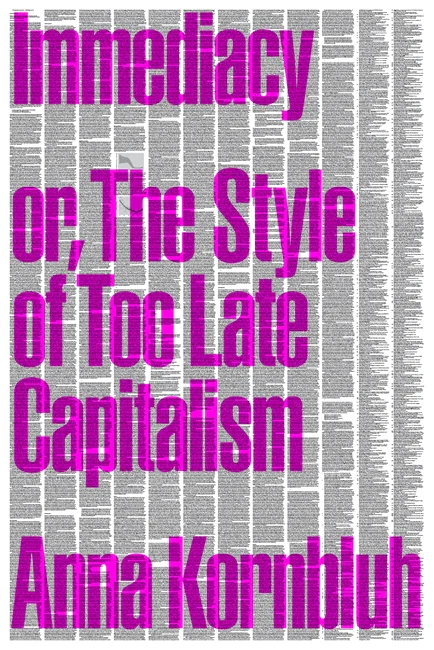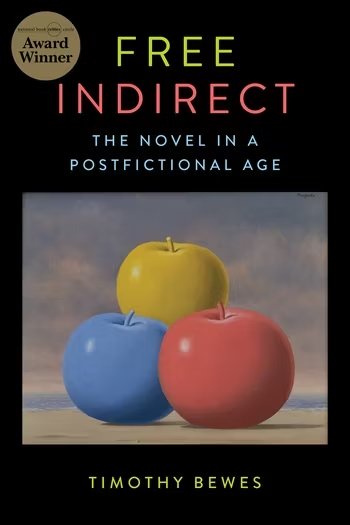Portrait of the Theorist as a Young Man: The Double Life of Paul de Man
When I began graduate study at Cornell University in 1991 it was often referred to, along with Yale, as a bastion of deconstruction. Eight years after his death, and three after the scandal of his wartime journalism had put his story on the cover of Newsweek, Paul de Man’s influence still felt pervasive. The most popular and theoretically intense graduate seminars reproduced his seminal discussions of Rousseau, Wordsworth and Shelley. When professors urged their students to produce ‘rhetorical readings’, they had in mind the sort of intellectual virtuosity, born of careful attention to textual detail, exemplified by de Man’s essays. And when the occasional heretic was chided (or mortified) for producing something that could be dismissed as mere cultural studies, it was abundantly clear where to look for remediation. Of course, there were pockets of resistance – the murmurings of Marxists, new historicists, lonely Leavisites, or people simply fed up with what could sometimes feel like a critical monoculture – but these were departures from the intellectual practices on which the educational capital of the place clearly rested. It is little wonder that the discovery of de Man’s wartime journalism produced such a feeling of Schadenfreude among those who had felt marginalised by the dominance of deconstruction in the North American academy. For many, the knowledge that de Man had worked for the collaborationist press in occupied Belgium became a way of discrediting everything he had done since. The politically unaccountable character of deconstruction was apparently confirmed by the juvenilia of its leading practitioner. At Cornell, though, it seemed as if the wagons had been circled.
De Man had arrived in New York in 1948, without money and with few personal or professional connections. For a while, he worked as a stock boy for Doubleday at Grand Central Station. During this period, he was building a social and intellectual network, consisting of people like Dwight Macdonald and Mary McCarthy (the latter would be crucial in getting him his first teaching job at Bard College). For a long time, his biography seemed like that of many of the other exiles who brought European intellectual life to postwar America. He completed a doctorate at Harvard in 1960, and taught at Cornell until 1969. By the time he had moved to Yale, where he assumed the Sterling Professorship of French and Comparative Literature in 1979, he had become a kind of culture hero: possibly the first genuine academic star in a universe that would be largely composed of his own students.
Those students clearly revered him, as did many of his colleagues. They speak of him adoringly, but insist that his charisma stemmed from an intellectual commitment that was both deeply felt and self-effacing. Academic cultures are organisms with a highly adapted reproductive function. Networks of intimacy, loyalty and friendship are an important part of this. In the case of de Man and his students, a rigorous fidelity to a practice of ‘reading’ that made the indistinction between literal and rhetorical language its central platform consolidated a professional milieu that was largely responsible for the dissemination of French post-structuralism to the English-speaking world. The whole thing must look like some vast family tree with branches touching most of the elite institutions in the United States. As Barbara Johnson said at a memorial gathering in 1984, ‘the country is dotted with his disciples’:
His impact was so profound and so specific that it is possible to determine from people’s work not only that he was their teacher but also when he was their teacher – what he was working on when they passed their time beside him. He was the implied reader driving literary critical pens in every university in the country.
Even for people without a direct relationship to this lineage, the lessons of Paul de Man and deconstruction were profound. One does not have to enter into the hagiography to see the ways in which it transformed academic life. The understanding that signification is both formed and deformed by its rhetorical underpinnings gave people working in all sorts of fields a way of displacing the propositional claims of hegemonic discourses. It opened up the space for an alterity implicit even in the most functionalised representational forms. For scholars working on gender, on postcoloniality, on queer identity, and even for the Marxists who pitted themselves against the apparently ahistorical bent of deconstruction, all of this was immensely productive. ‘Reading’ became not only central to work in the Humanities, but part of a broader critical posture; a relationship to the world (the world as discourse) that one could imagine defining the labour of enlightened bureaucrats as much as that of professors and students at odds with the more instrumentalised academic disciplines of the social sciences.
The political meaning and professional standing of this position were both at stake in 1988. The story is by now well known. A zealous graduate student, Ortwin de Graef, was working on de Man and burrowing through the Belgian archives with a hankering for historical origins at odds with the relentlessly rhetorical bent of his subject. What he unearthed were articles published in Le Soir and the Flemish newspaper Het Vlaamsche Land in the early 1940s, when Belgium was occupied and these papers were clearly under Nazi control.
Of the more than 140 articles de Man published during that period, one stands out: an essay entitled ‘The Jews in Contemporary Literature’, which de Man wrote as a 21 year old. It appeared in Le Soir on 4 March 1941, along with a series of other anti-Semitic articles assembled under the heading ‘The Jews and Us: the Cultural Aspects’. In it, de Man dismissed the idea that Jewish influence was corrupting the literature of Europe (something his defenders would stress), but concluded by writing the following:
one sees that a solution of the Jewish problem that would aim at the creation of a Jewish colony isolated from Europe would not entail, for the literary life of the west, deplorable consequences. The latter would lose, in all, a few personalities of mediocre value and would continue, as in the past, to develop according to its own evolutive laws.
*
For Evelyn Barish, the ‘bombshell’ of de Man’s collaborationist writing must have felt like the tip of an iceberg or the edge of an abyss. It was already widely known that de Man’s uncle was Henri de Man, a celebrated political philosopher, a minister of finance and president of the Belgian Socialist Party before the war, a fascist and influential collaborator during it. How deeply had Paul followed his uncle into the murky world of fascist salons? How much more was there to know about de Man’s involvement in collaborationist publishing?
The question feels a bit opportunistic, or forced, because in fact we already know an enormous amount about de Man’s wartime writing. His journalism was collected and published in 1988. Subsequent reviewers and critics have sifted through this material in order to weigh the evidence as carefully as possible, aware that, as John Brenkman put it, the de Man controversy evoked a ‘juridical stance and prosecutorial attitude’ that necessitated ‘being convinced beyond a reasonable doubt before drawing conclusions as to de Man’s positions, beliefs and actions’.
If collaborationist journalism were the only thing at stake, it is doubtful Barish would have had enough to sustain a biography. But there were also rumours of other misdeeds. At a 1988 conference in Antwerp, Barish tells us, a former friend of de Man’s, Georges Goriély, accused him of bigamy, forgery and theft. Suddenly de Man’s closet seemed to be holding enough skeletons to fill a small graveyard. The man who had redefined literary studies and assumed a position of almost unprecedented authority and adulation within it had, after all, appeared in New York after the war almost ex nihilo. How much did anyone really know about his personal affairs? Not much, it turns out. As Barish became more involved in her research, it became clear not only that de Man had concealed a great deal about himself, but that self-erasure was one of the hallmarks of his inscrutable personality.
The wager behind Barish’s book is twofold. Firstly, the book assumes that understanding de Man’s early life will cast some light on his subsequent work as a scholar and theorist. This is the most obvious pretext for a biography of this kind, but it is executed half-heartedly. Others – intellectual historians, not biographers – have pursued this relationship with more rigour and expertise. But secondly, and more pressingly, there is the possibility that de Man himself might emerge as a genuine ‘character’; that enough smaller transgressions and indiscretions can be clustered around the fact of collaboration to flesh out a coherent portrait of an anti-hero who never escapes his psychological and moral flaws.
It is this urge to novelisation that seems to dominate large sections of The Double Life of Paul de Man. Barish has sifted archives, conducted interviews and assimilated enough of Belgium to recreate the prewar habits of its rising bourgeoisie as if she were writing the kind of Bildungsroman that was, after all, the literary form that gave expression to that world. The opening sections of the book, recounting de Man’s childhood, and his troubled family background, evoke that familiar literary space in which characters crystallise the conflicts of the European middle classes. In fact, Barish suggests that in Frédéric Moreau, from Flaubert’s A Sentimental Education, Paul could have found a ‘parallel self’. It is a revealing comment. Barish’s biography reads, at points, so much like a novel that one almost wishes it were one. That way it might have avoided some of the pitfalls of trying to merge intellectual history with the desire for scandal that, despite the book’s best efforts, largely explains its appeal.
The first part of Barish’s book evokes the transitions and tensions running through the intimate lives of families, but also the larger political background. We find an upper-middle class milieu conscious of its humble origins and eager to translate its newfound wealth into cultural capital. Small details reflect larger conflicts. The family was Flemish, but spoke French at home. Its original Flemish name, Deman, was modified in accordance with its growing social status. But marriages were strained, affairs seemed to have been taken for granted, and apparently respectable families worked hard to conceal their secrets. And secrets, or the urge to uncover them, are precisely what drives Barish’s book. The early sections of The Double Life of Paul de Man orient to scandal, exposé and a vaguely prurient interest in the pathologies of family life, as if these will help explain the subsequent actions of its anti-hero. Paul’s older brother, we learn, apparently raped his younger cousin, only twelve years old at the time, and may have been a serial offender. Bob de Man, his father, kept mistresses. His mother, Madelaine, withdrawn and melancholic when Paul was a child, eventually hanged herself (Paul found her dangling in an attic). It was little wonder he identified so strongly with his charismatic and politically influential uncle. Later he would claim, erroneously, that Henri de Man was in fact his biological father.
This sense of psychologisation is crucial to Barish’s depiction of de Man’s nebulous, unstable character.
The man who obsessively needed to seek himself, Narcissus-like, in a mirror all his adult life was certainly preceded by the infant and boy who lacked the close and loving attention of his first caregiver … In psychoanalytic terms, there can be little doubt that profound damage to his sense of self would underlie much of his subsequent development. And one may venture to guess that what was unstable in himself, which he called the abyss, or abîme, would become the instability of language.
These moments of vulgar psychoanalysis don’t dominate, but they crop up often enough to provide a sort of meta-commentary that is curiously unaware of how the novelistic conventions of the biography necessitate precisely this kind of framework. Paul de Man, in Barish’s account, is defined by lack and a corresponding attempt to fill some gaping void, a ‘damaging emptiness’. He is also somehow adrift, rudderless, without a moral compass, and hence able to reinvent himself without too many scruples. The undecidability of his personality, it seems, would be displaced into a theory built around the undecidability of literary texts.
But if de Man is defined by a kind of emptiness, he also frequently comes across in Barish’s book as oddly absent. At times, he is a series of gestures (a shrug, a gaze, a smile), or a string of adjectives (intelligent, charming, charismatic), but for a lot of the book – its first part especially – he is the pretext for a much more wide-ranging kind of historical scholarship. The most interesting and intensely researched parts of the book place de Man in a world of collaborationist media, consisting of publishers, journalists, newspapers like Le Soir, and book distributors, but they also have the effect of putting de Man himself into the background. Though he had been a brilliant secondary student, his undergraduate career at the Free University of Brussels was so disrupted by his inability to sit exams that he never graduated. Instead, he became an autodidact and opted for a career in belles lettres. What Barish calls his ‘intelligence, aristocratic manner, ability to provide a stream of entertaining humor, as well as his good looks and high social status’, all equipped him for this path.
His uncle would also have been a great help. In fact the first ‘de Manians’ were followers of Henri de Man, and in the late 1930s they were all over the place. By the time Belgium was occupied, Paul was proximate to, if not integrated into, the ‘fascist social network of Brussels’, which included men like Raymond de Becker, a committed anti-Semite who would employ Paul at Le Soir. Barish maps relationships between writers, publishers, salons and other aspects of the book publishing industry across France and Belgium. Paul de Man was close to the centre of this world, though he comes into view the way an empty space would once the area around it has been completely filled in. He emerges as an opportunist, not an ideologue. He shifted identities to fit in with his circumstances. He seems to lack anything like a belief that might have defined him from the inside out: ‘In December of 1940, the good schoolboy vanished; only the attractive youthful shell remained’.
Barish is eager to point out that de Man’s involvement in collaborationist media ran deeper than ‘The Jews in Present Day Literature’, a point the scholarship on the subject confirms. Brenkman, for instance, gives us a detailed account of de Man’s relationship to a fascist intelligentsia, and explains his views on culture, race, democracy, bourgeois individualism, Nazi Germany and the forms of collectivity it imposed:
De Man went beyond merely voicing anti-democratic, anti-bourgeois, and anti-communist sentiments. The intellectual project he pursued aimed at synthesizing a critique of bourgeois culture and an authoritarian politics that would cement a hierarchical society through totalitarian discipline and mass ritual.
Barish revisits many of these insights, but sometimes her version of them feels undermined by the demands of biography, which force her away from textual evidence to relatively banal speculations on personal motivations:
In an era of darkness and anxiety, dullness and certainty were reassuring. Paul de Man’s stance as cultural critic was knowing, staid, and law-abiding, exactly calibrated for his purposes. As the subsequent success of his career demonstrated, he knew instinctively what he was doing, whom he wished to reach, and how to address that audience.
Still, Barish’s account of de Man’s collaboration produces a useful condensation of known facts, and enough new material to justify our attention. De Man supported, she tells us, ‘all the prevalent ethnic and racial stereotypes and prejudices of his day’. As a reviewer, he endorsed books that ‘ennobled the supposed Germanic virtues of soul, deep culture (‘Vernunft’), and willingness to sacrifice for the cause of the war, while also praising what he constructed as the Flemish racial qualities of simplicity, love of mystery, and imagination’. He also praised ‘notorious pro-Nazi intellectuals’ – men like Pierre Daye, Abel Bonnard and Friedrich Grimm – and celebrated the Weimer Literary Congress, which was organized by Joseph Goebbels to promote fascist writing.
The most damning piece of evidence she has unearthed, however, is a proposal for a journal that was to be titled Cahiers Européens (European Notebooks). After the war, the prosecuting attorney for wartime collaboration mistakenly attributed the proposal solely to Raymond de Becker. It was probably fortunate for de Man the he did so. The journal was conceived with the aim of helping ‘German culture penetrate further into Wallonia and France’. It was also a key piece of evidence in the postwar prosecution that would sentence de Becker to death for treason. At least half of the original draft, Barish tells us, was written by de Man.
*
When de Man left Belgium after the war, he would obviously have been eager to conceal his involvement with Le Soir, de Becker, and a host of other collaborationist media organisations, most of which he fell out with before the war had ended, not as the result of ideological differences, but on account of his own ambition and commercial incompetence. Though his name runs ‘like red thread’ through postwar court dossiers on the Agence Dechenne (a book distributor), Editions de la Toison d’Or (a publisher) and Le Soir, he was never prosecuted, nor directly implicated by investigators in the worst of collaborationist culture.
Nevertheless, when he left Belgium he was still on the verge of becoming a fugitive, though of another kind entirely. After the war, he started a publishing company called Hermès. The whole thing was either an inexplicable, mind-boggling exercise in financial buffoonery, or a deliberate attempt to defraud investors, an elaborate scam masquerading as a legitimate, high cultural enterprise. Paul attracted investment funds from family members, friends and other gullible parties (he took the life savings of his old nurse, Barish tells us), then paid himself an extravagant salary and probably embezzled the rest. In less than two years, the company’s assets were gone. Hermès managed to publish one, perhaps two books, but in the meantime a sum in the region of 1 450 000 Belgian francs had disappeared. It was at this point that de Man, who was married and the father of three children, sent his family to Argentina and fled to New York. He was tried for forgery and embezzlement in absentia, and sentenced to five years in prison.
As we move into the second part of The Double Life of Paul de Man, we encounter a man eager to keep his tainted past a secret, but whose shady habits are, in some attenuated way, still with him. There is a bigamous marriage, the abandonment of the children from his first marriage, his continual skipping out on rent, his running up of debts he would never pay, some brazen lying about his undergraduate career before he could get into Harvard, and some unbelievable largesse from supervisors who managed to drag him through a doctoral program that, at many points, it seemed he would never complete, despite his brilliance. This thread of petty villainy forms a discordant backdrop to the rise of an academic superstar.
It is all a bit underwhelming, to be honest. After the revelations about Le Soir, the fact that he lied his way into Harvard or failed to divorce his first wife before marrying his second feel a bit anti-climactic. De Man emerges as a performer, a man living behind the mask of his European charm, a man essentially without qualities and able constantly to reinvent himself. Naturally enough, his version of deconstruction reflects, or symptomatises, this amorphous personality. And somehow the fact that people seemed to like him merely confirms this portrait of a manipulative imposter.
The Double Life of Paul de Man is certainly no work of vulgar character assassination. In fact, Barish is very good at highlighting the fact that de Man aided Jews, had close Jewish friends, and at moments worked on the left as well as the right. But she is also eager to maintain her central thesis about a consistently orchestrated history of deception – an ‘autobiographical Ponzi scheme’, as she puts it. While de Man emerges as thoroughly compromised, the book also creates the lingering feeling that his very presence in elite institutions of higher education is an affront to decency outweighing the significance of his intellectual contributions. As a result, even fairly innocuous details are tinged with something vaguely disquieting. The fact that his first book, Blindness and Insight (1971), was apparently ‘cobbled together’ by Geoffrey Hartman out of fairly disparate essays, in order to satisfy Yale’s tenure requirements, has this air. It is as if de Man’s scholarship was born of a conspiracy and underpinned by a Svengali-like ability to have others do his bidding.
As part of a broader intellectual history, some of this could be really fascinating. There is a lot to say about the way in which postwar literary studies turned to European philosophy as the basis of a new disciplinary orientation, and about why people like de Man were so ideally situated to embody a form of intellectual desire that would, during the 1970s and 1980s, become so all-consuming. Barish touches on some of this, and is canny enough to refer to Pierre Bourdieu when she does so, but to pursue it would have forced her to write a different kind of book (a less marketable one, to be sure) and to delve more fully into the later part of de Man’s career. The Double Life of Paul de Man peters out by the time de Man is at Cornell. It is as if the rest of the story writes itself (which is largely true), though one also gets the sense that we are missing something. It is a pity, at least for Barish, that de Man did not do something else truly heinous. The atmosphere of scandal evoked by the later part of the biography, which encapsulates the early part of de Man’s academic career, remains, for the most part, an atmosphere.
As with the earlier sections of the book, there is also something unsettling about the way in which Barish places de Man in a context. It is as if the detail in the background overwhelms and displaces the figure in the foreground, which is in turn forced to the edges of the frame, reduced to a series of conjectures, or at moments made to vanish altogether. This occurs when Barish has to make tangible de Man’s relationship to the milieus through which he moved.
When Paul arrived at a party Dwight Macdonald gave in the early fall of 1948, an observer could have seen in his face a combination of curiosity, detachment, and absence of judgment, all underlain by an indefinable air of knowingness. He was a very attractive man. His body was athletically built but slender, his countenance marked by the kind of masculine, prominent nose recognizable from Flemish paintings, and he radiated both intellectual and sexual intensity. Macdonald’s gatherings were legendary, and this was a moment of unique opportunity. The editor was a generous, if argumentative, host, and through his quarters passed some of the most interesting people of the era. East Tenth Street was an inexpensive part of town, but known to the avant-garde, and the Macdonalds had chosen their neighborhood carefully.
De Man may well have been a chameleon, but in passages like this one that figure of speech is curiously literalised. The prose lets de Man vanish into his background, and for a moment we are left wondering whether he was ever really there fraternising with Macdonald and company. When he comes back into view a page later, the tense is conditional, and our sense of de Man himself is utterly immaterial:
If de Man paused to breathe in the smoky air, redolent of alcohol, food, and the perfume of charming women, loud with bonhomie and instant argument, he would have realized at once that he had come to the real New York, the place he’d been looking for.
This sort of thing suggests the point at which evidence falls short of novelistic ambition. What we are left with in the second part of the book is a figure whose personal experiences, though no doubt haunted by his past, are often frustratingly insubstantial.
The publicity around Barish’s book suggests something quite different. On the back cover, Clive James promises us a ‘daunting’ portrait of a great ‘literary charlatan’. Cynthia Ozick talks about a ‘brazen rascal’. These descriptions are not inaccurate, but they are calibrated to evoke an air of expectation that Barish, and de Man himself, do not quite deliver. The Double Life of Paul de Man is driven by a voyeuristic impulse that remains somehow unsatisfied. Perhaps we are left wanting to imagine a de Man who was sleeping with his students, or who was plagiarising his best work from forgotten victims of the fascism with which he collaborated. It is as if, twenty odd years after the revelation of his wartime activity, there is still a surplus of unspent resentment out there that needs to be channeled into something that feels intellectually productive. Unfortunately skipping out on rent and lying to get into Harvard don’t quite do it. No doubt the embezzling in Belgium has the force of a dark secret exposed, but in the wake of the Global Financial Crisis, and the rogues gallery of imposters implicated in it, even that seems a bit underwhelming.
If the real point is to show how deconstruction emerged out of deep character flaws and a desire to erode the actuality of history, then the whole thing seems belated. Any sense that one of the most complex and productive intellectual movements of the twentieth century can rise or fall with the biography of an individual is long gone. Today, when one looks back on the fairly turgid debates around de Man and his legacy that appeared as letters to the editor in publications like the London Review of Books, it is easy to feel a migraine coming on. Those debates have lost much of their topicality. As a result it is not exactly clear what is at stake in lingering over de Man’s misdeeds. At the crossroads of intellectual history and biographical exposé, it is the reader who is also likely to be feeling a bit compromised.
References
John Brenkman, ‘Fascist Commitments,’ Responses: on Paul de Man’s Wartime Journalism, edited by Werner Hamacher, Neil Hertz and Thomas Keenan (University of Nebraska Press, 1989).
Paul de Man, ‘The Jews in Contemporary Literature,’ translated by Martin McQuillan, in McQuillan, Paul de Man (Routledge, 2001).
